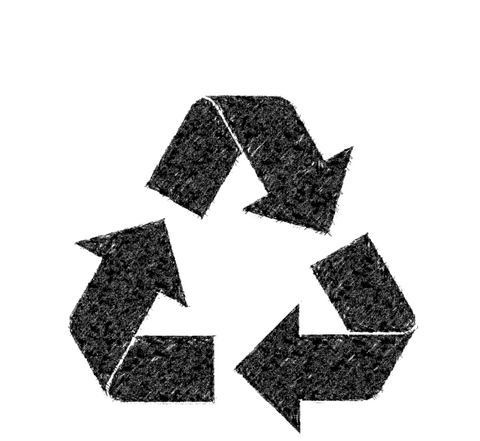This was probably the issue that consumed the most energy in our early days: finding the right packaging for our specialty coffees . Naturally, like any new brand, we wanted an attractive presentation to highlight the high quality of the beans, while also having strong environmental considerations. Indeed, one of the essential conditions for choosing our packaging was its recyclability.

And believe us, it's not so simple for coffee, because you need a bag that offers an excellent barrier against oxygen, light, and moisture, while also complying with the recycling regulations of the country where it's sold. We'll tell you about our thought process in choosing this packaging:
Material - nm
Kraft paper : Initially, we considered kraft paper, a material that is easily recycled and has a pleasing natural appearance. We quickly realized that to preserve the coffee, it needed to be lined with plastic, and very often aluminum. From a recyclability standpoint, this is far from ideal, because while all these materials are generally recyclable individually, this triple layer is much less so.
Plant-based plastics : we've reviewed the various material options highlighted by packaging manufacturers. Plant-based plastics, primarily PLA (polylactic acid), are frequently mentioned. This comes from sugarcane, corn starch, or algae, and is often referred to as "bio-based plastic" or simply "bioplastic." Contrary to what one might think, a plant-based origin doesn't guarantee easy recycling; in fact, it has the opposite effect. Currently, in France, we are unable to recycle this plastic, and it disrupts the recycling process. Furthermore, crops grown for these plant-based plastics can compete with food supplies or be subject to intensive farming practices, which undermines the benefits sought by this alternative. "Bio-based" plastic also doesn't mean it will be biodegradable; quite the opposite.
Biodegradable plastic : certainly one of the biggest disappointments of our research, despite its initially enticing promise. Upon closer examination, the European standard EN13432, which defines the biodegradability of plastic packaging, stipulates that "90% of the dry mass degrades in less than 6 months in an industrial environment," in other words, a full six months at temperatures between 50 and 70 degrees Celsius—conditions quite rare in nature, despite the commendable efforts made to mitigate climate change in recent years. Furthermore, even if degradation were to occur, the constituents could, according to ANSES (the French Agency for Food, Environmental and Occupational Health & Safety), present potential hazards to human health and the environment. Therefore, the agency recommends "prohibiting any allusion to, or even encouragement of, harmful practices and establishing a single standard that incorporates an assessment of biodegradability in all environmental media, with more stringent criteria regarding their composition."
Compostable plastic : This is an improved version of biodegradable plastic. All compostable plastic is biodegradable, but the reverse is not necessarily true. The European standard EN13432 differentiates between compostable and biodegradable plastics based on the degradation time under the same conditions: 3 months instead of 6 months to degrade 90% of the dry mass. However, the same issues arise as with biodegradable plastic, so we have decided not to select this packaging.
Recyclable plastic : we had to do some research on the subject, as most coffee bag suppliers are unfamiliar with the recycling systems in France and may incorrectly claim that packaging is recyclable when it will end up being incinerated or buried. Furthermore, the recycling sector is evolving quite rapidly, as are the guidelines. We therefore consulted the recommendations of COTREP (Technical Committee for the Recycling of Plastic Packaging) to gain a clearer understanding. It turns out that in 2022, when we chose our packaging, LDPE (or low-density polyethylene) was declared recyclable, provided it was not mixed with other plastics, paper, or aluminum. We therefore opted for this material.
Recycled plastic: frequently found among beverage manufacturers (water and sodas) in the form of recycled PET, we personally haven't yet found an equivalent for coffee bags, as these are generally made of PE. The advantage of recycled plastic is that it requires little to no virgin plastic (and therefore petroleum) because it's already at least in its second life, thus reducing its carbon footprint. However, the solution isn't perfect, as the recycling process consumes energy, and the loop isn't infinite: a significant portion of the plastic won't be recycled because it's of lower quality and therefore can't be used again in equivalent packaging.
Printing - nf

To maintain recyclability, the ideal solution is to leave the bag unprinted. This is currently our approach, partly due to budgetary considerations, but laser printing or printing with non-washable ink would be acceptable. We may adopt this method in the future. However, one point to note: hot stamping is a common printing process, often producing excellent results, but our design agency advised against it for environmental reasons: the process wastes a significant amount of material and can disrupt LDPE recycling at sorting centers.
Dimensions - nf
As you may have noticed, our bags are compact and folded in on themselves. We've even sometimes received comments about their capacity compared to other bags of the same advertised weight. But we want to reassure you: we do indeed put 250 grams in each one, no cheating! We chose this format because it allows for optimal space utilization in shipping boxes: this means less cardboard used per box, and we really strive to make each shipment as compact as possible.
Valve - nf
As you may know, freshly roasted coffee has an unfortunate tendency to respire: carbon dioxide escapes, and this can cause a coffee bag to swell considerably in the first few days. This isn't usually a problem, unless the bag opens or bursts if the amount of accumulated CO2 becomes too high. Therefore, coffee bag suppliers generally offer a one-way valve, which allows this carbon dioxide to escape without letting in oxygen, which would damage the beans.
Our coffee bags include a valve made of PE, a material accepted for recycling in this case according to COTREP. However, we are not certain whether to keep this valve at Celsius in our future packaging orders, as we could simply let the coffee rest for a few days before bagging to prevent swelling.
Because, even if the bag itself is recyclable, the valve adds extra plastic to our bags, and the best waste is the waste we don't produce. We will be studying this solution in the coming months.
Labels - nf

According to the COTREP website, in order for our LDPE packaging to remain recyclable, it must have a specific type of label. Ideally, the label should be made of the same material and be washable, but paper labels are also acceptable, provided they are washable. This is the solution we chose: two paper labels with adhesive backing, both washable.
Our current 250-gram packaging consists of a compact, unprinted, 100% low-density polyethylene bag with a polyethylene valve. A label and a back label made of non-washable paper are affixed to the valve. This is the best solution we have found so far, considering it the lesser of two evils. It is plastic, therefore a petroleum derivative, but not the best solution currently available for our operations.
It would appear that the recycled plastic mentioned earlier is starting to spread in the coffee bag market, which would constitute a further step in this “lesser evil”.
We are closely monitoring developments in France regarding deposit systems, but for the moment it's quite difficult for us to implement without a physical point of sale. Bulk sales are also an ideal solution; some roasters with shops offer this to their customers.
We are always open and interested in discussing these solutions with you, without dogma or fixed opinions.

